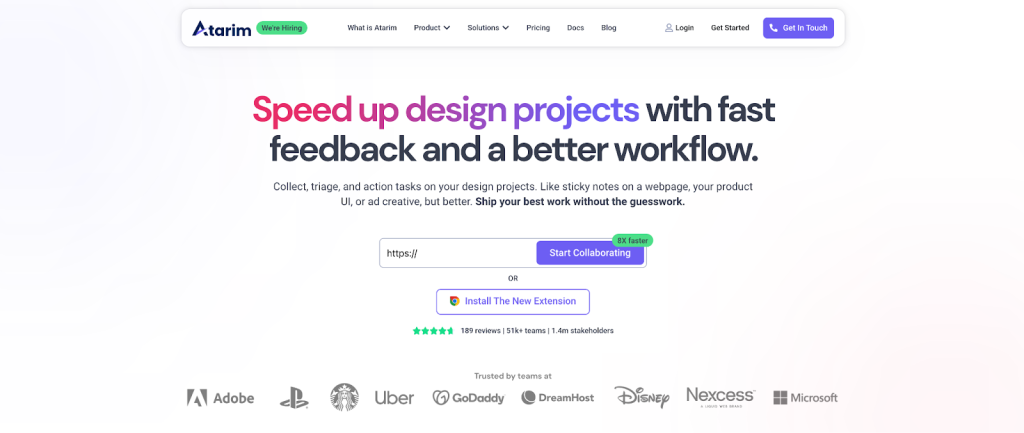Dogfooding: Why It’s Fundamental To Building Great Products
At ScaleMath, we work very closely with all the companies in our advisory to deliver the world’s best customer experiences.
This is a big commitment and an ongoing battle, yet it remains a core part of what we do. We only work with companies that desire excellence as we do because we believe it’s the only way to truly win.
And attention to detail is crucial – as I like to say: the way you do one thing is the way you do everything.

We wouldn’t enjoy operating & advising companies that build a product we’re unable to “dogfood”. And this is also because becoming the ideal customer profile is a core part of how we’re able to define the best possible growth strategy for a company.
One of the cornerstones of our approach to building superior products is the concept of “dogfooding.”
Now, if you’re unfamiliar with this term, let me paint a vivid picture for you.
Imagine a chef who wouldn’t dare serve a dish without first tasting it themselves. That’s dogfooding in a nutshell: using your own products to ensure they meet the highest standards before presenting them to your customers.
At ScaleMath, we don’t just advocate for this practice – we live by it.
A great recent example is an internal project called WP DocSync – not publicly available (at least not yet, but stay tuned + watch this space 😉)
The internal project was designed to streamline our content publishing and update workflow – bridging the gap between Google Docs and WordPress.

As we developed WP DocSync, we didn’t merely test it in a controlled environment – we integrated it into our daily operations.
All of us here at ScaleMath have used WP DocSync almost every day for months, giving us a huge opportunity to discover bugs and issues, opportunities for improving the UI, streamlining the workflow, and clarifying messages and feedback.
And yes, at first, it was a little frustrating!
But we all felt passionately that we wanted to be the ones to uncover issues and problems, so that we could fix them before releasing a product we could be truly proud of, and with confidence in its quality.
Similarly, our partnership with Atarim, a platform designed to streamline client collaboration and feedback, also demonstrates our fervent commitment to dogfooding.
We use Atarim extensively within our own teams and in our collaboration with Atarim itself. This dual-layered dogfooding process has not only deepened our understanding of the product, but also highlighted areas for improvement and innovation, ensuring that we contribute meaningfully to its evolution.

At ScaleMath, we believe that dogfooding is not just a testing method – it’s a philosophy.
It’s about committing to the quality and user experience that we expect our clients to deliver to their own customers.
By embedding ourselves in the user journey, we gain invaluable insights that enable us to create products that truly resonate with users and meet their needs in ways they hadn’t even anticipated.
In the following sections, we’ll dive deeper into why dogfooding is a critical practice for any SaaS company aiming to build not just functional, but outstanding products. We’ll explore its impact on product development, customer satisfaction, and long-term business success.
So, let’s open the can, grab a fork, and dig into the meat of good product development!

What is Dogfooding?
Dogfooding. It’s an odd term, isn’t it?
But in the realm of software development, it carries a profound significance.
At its core, dogfooding means using your own products as your primary tools.
Imagine building a bridge and being the first to walk across it; that’s the essence of dogfooding. It’s about putting your creation to the test in real-world scenarios before it ever reaches the hands of customers.
The term “dogfooding” traces its origins back to the pet food industry. There’s an often-repeated story from the 1970s about a dog food company executive who ate his company’s dog food during a shareholders’ meeting to demonstrate his confidence in its quality. This simple yet striking act perfectly encapsulates the essence of dogfooding: showing utmost belief in your product by using it yourself.
In the tech world, dogfooding has become a critical practice. It allows companies to experience firsthand both the strengths and weaknesses of their products. By integrating their software into their own daily operations, developers can catch bugs, identify potential improvements, and understand the user experience from an insider’s perspective.
But why is this so important in SaaS and app development?
Let’s break it down.
When you dogfood, you’re not just testing functionality – you’re living the user journey.
This means you encounter the same frustrations, discover the same joys, and ultimately gain a deeper understanding of how your product fits into the lives of its users. It’s a hands-on, immersive experience that no amount of external testing can replicate.
For SaaS companies, this practice is invaluable.
It bridges the gap between development and real-world application, ensuring that the product is not just a theoretical success but a practical one as well. It drives a culture of empathy and user-centric design, which are essential for building products that truly resonate with people.

At ScaleMath, we don’t just talk about dogfooding – we live it.
Whether it’s our own internal projects like WP DocSync or our collaborative efforts with Atarim, we immerse ourselves in our work. This approach ensures that when we deliver a solution, it’s not just polished – it’s battle-tested, reliable, and aligned with the needs of its users.
So, when we say dogfooding is fundamental to building great products, we mean it. It’s about trust, integrity, and a commitment to excellence.
And, as we’ve seen time and again, it’s the difference between a product that works and a product that wows.
Dogfooding is more than a test.
It’s a testament to our belief in the products we create.
And that’s why it’s fundamental to our process, our philosophy, and our success.
Benefits of Dogfooding
When done properly, dogfooding not only identifies and resolves issues early, but also creates a deeper connection between the product and its users. Let’s take a look at the key advantages of dogfooding, with some real-world examples that illustrate its impact.
Identifying and Fixing Bugs Early
Think of dogfooding as your first line of defense against bugs and glitches. When you use your own product, you become its first tester, and that’s where the magic happens.
This is what both we, and our valued partners at Atarim, have found ourselves.
Products we were initially proud of became something we used rigorously internally, catching multiple bugs that would easily have slipped through traditional testing.
Those products we were proud of quickly became projects we obsessed over to a level that far surpassed any normal testing.
And then the magic happened. The products became ones we felt truly justified in being proud of – and happy to release into the world.
Gaining User Empathy
There’s no better way to understand your users than by walking a mile in their shoes. When employees use their own products, they experience firsthand the challenges and joys their customers face.
Lyft, the popular ride-sharing service, also demonstrates this approach well. Many of Lyft’s employees drive for the service, gaining insights into the driver and passenger experience. This practice helps them empathize with users, leading to a better understanding of what works and what needs improvement.
By being a part of the ecosystem they’ve built, they can see their product through the eyes of their users, which is invaluable for product development.
Improving Product Quality
Dogfooding isn’t just about finding bugs – it’s about elevating the overall quality of the product.
Google takes this to another level with its rigorous internal testing. Before rolling out any new feature or product to the public, Google employees use it extensively in their daily operations. This internal feedback loop is critical in refining their products, from Gmail to Google Maps, ensuring they meet the highest quality standards.
Google’s commitment to dogfooding means they don’t just meet expectations – they set them.
Boosting Team Morale and Ownership
When employees use their own products, it encourages a sense of pride and ownership. They’re not just working on a project, they’re creating something they themselves use and rely on.
At Facebook, this principle is part of the company culture. Employees are required to use internal products and services, creating a strong connection between the team and their work. This practice boosts morale and cultivates a sense of ownership, as employees see firsthand how their efforts contribute to the company’s success.
It’s a powerful motivator, turning team members into passionate advocates for their own products.

Enhancing Marketing and Sales Efforts
Dogfooding also provides invaluable insights that can shape more effective marketing and sales strategies. When you use your own products, you understand their strengths and unique selling points better than anyone else.
The internal use of a company’s own products helps to inform better marketing strategies in future, such as companies like Apple, where employees are avid users of their own products. This firsthand experience allows them to speak authentically about the features and benefits of their devices. They understand the nuances and can create compelling messages that resonate with customers.
It’s a strategic advantage that sets their marketing apart, making it more credible and impactful.
Companies That Excel at Dogfooding
Dogfooding today is a very common practice among most of the top tech companies, and many have mastered the art to apply significant improvements to both their products and user experiences.
Here’s how some of the industry leaders are using dogfooding strategies successfully in order to stay ahead:
Vercel
- Focus on Frontend Development: Vercel uses its own platform for building and deploying web applications, which helps them constantly refine their product offerings.
- Next.js Usage: The Vercel team uses Next.js, their open-source React framework, to build and test Vercel’s features, ensuring they experience and address any limitations firsthand.
- Continuous Feedback Loop: By deploying and iterating on their own site with Vercel, they identify performance issues and missing features that directly feed into the development of new tools and improvements in future.
AWS (Amazon Web Services)
- Internal Use for Scalability and Reliability: AWS uses its own cloud services to power Amazon’s extensive e-commerce platform and other internal applications, pushing their infrastructure to the limits to ensure robustness and scalability.
- Service Refinement: Dogfooding has led to the enhancement of services such as EC2, S3, and Lambda, allowing AWS to offer highly reliable and scalable solutions that meet the needs of both internal and external users.
- Innovation Driver: The practice of dogfooding helps AWS identify pain points and opportunities for new services, keeping their product range cutting-edge and aligned with real-world needs.
Cloudflare
- Network Performance Optimization: Cloudflare uses its own suite of products, such as Cloudflare Workers and CDN, to improve both the speed and security of its internal and customer-facing applications.
- Security Enhancement: By relying on their own security tools, they can quickly identify vulnerabilities and develop increasingly robust security measures that protect against a variety of threats.
- Global Edge Network: Dogfooding their global edge network helps Cloudflare continuously improve its reliability and performance, ensuring the very best service for their users.
Linear
- Internal Task Management: Linear uses its own issue tracking and project management software to manage internal workflows and product development tasks.
- Feature Development: By managing their own product development through Linear, the team is able to gain direct insight into usability issues and feature requirements, leading to further enhancements and a more intuitive product.
- Rapid Iteration: Dogfooding allows Linear to iterate quickly on new features, ensuring that updates meet the needs of both their team and their users.
Microsoft
- Elite Program Overview: Microsoft’s Elite program involves rigorous internal testing of new products and updates across different teams, with a focus on gathering detailed feedback to refine and perfect their software.
- Product Improvements: Examples of products improved through dogfooding include Windows and Office 365, where internal use has led to significant enhancements in usability, security, and performance.
- Comprehensive Testing: Microsoft employees use pre-release versions of software in their daily work, helping to identify and resolve issues long before public release.
- Internal Use of Google Apps: Google employees rely heavily on Google Apps, such as Gmail, Drive, and Calendar, for daily operations, which helps identify user experience issues and areas for improvement.
- Impact on Product Development: This practice leads to a deeper understanding of user needs and drives continuous improvement in usability and functionality, making sure that Google products remain user-friendly and effective.
- Innovation and Feedback: Internal feedback has led to the development of new features and enhancements that are closely aligned with user expectations and industry trends.
- Mobile and VR Products: Facebook employees are required to use their mobile app, Messenger, and VR products, like Oculus, in their daily work and personal lives.
- Improvements and Benefits: This practice helps Facebook identify bugs, usability issues, and opportunities for new features, leading to products that are more reliable and engaging for users.
- User-Centric Development: By experiencing their own products as users, Facebook employees can empathize with their audience much better, and prioritize development efforts accordingly.
Lyft
- Driving for Lyft: Many Lyft employees, including executives, drive for the service to gain firsthand experience of the driver and passenger aspects of the platform.
- Insights and Improvements: This practice provides invaluable insights into operational challenges, user behavior, and service improvement opportunities, leading to enhancements in app functionality, driver support, and customer satisfaction.
- Empathy and Understanding: By engaging directly with their service, Lyft employees develop a deeper empathy for users, which informs better decision-making and product development.
By dogfooding their own products, these companies not only refine their offerings but also develop a culture of continuous improvement and user empathy, ensuring that their products meet the highest standards of quality and performance.

5 Ways to Implement Dogfooding Effectively
Dogfooding is a powerful tool in your product development arsenal.
But it’s not just about using your own products.
It’s about doing so in a way that drives meaningful insights and real improvements.
Here’s how you can implement dogfooding effectively to ensure your product not only works – but excels.
#1 – Involve the Whole Team
Dogfooding isn’t just for developers. It’s for everyone.
From marketing to customer support, involving the entire team ensures more diverse feedback that captures every aspect of the user experience. When everyone uses the product, they can provide insights from different perspectives, leading to a more holistic understanding of how the product performs in various situations.
Different team members will use the product in different ways. A marketer might focus on ease of use, while a developer might focus on performance and functionality. This diversity of feedback is crucial for identifying a wide range of issues and opportunities for improvement.
Get everyone on board. It’s not just a job for the techies.
#2 – Create a Structured Program
Dogfooding needs structure to be effective. It’s not just a free-for-all where anyone can give feedback whenever they feel like it. To maximize the benefits, create a structured program with clear guidelines and goals.
Set specific goals for what you want to achieve through dogfooding. Are you looking to identify usability issues, test new features, or ensure stability? Define these goals clearly.
- Establish guidelines for how feedback should be collected and reported.
- Create a timeline for the dogfooding period.
- Assign specific tasks or areas of the product for different team members to focus on.
Structure breeds clarity and focus. Make sure everyone knows their role in the process.
#3 – Encourage Honest Feedback
Honesty is the backbone of effective dogfooding. Without it, your feedback loop is as good as broken.
Create a culture of openness where employees feel comfortable sharing their honest opinions, even if they’re critical. Encourage them to speak up about what’s not working, what’s frustrating, and what could be better.
If team members are afraid to give negative feedback, you’ll miss out on key insights that could prevent a mediocre product from becoming great. Honest feedback helps identify real issues that users will face, not just the ones that are easy to talk about.
Feedback isn’t just a formality – it’s the heartbeat of improvement.
#4 – Incentivise Participation
Let’s face it: people are more likely to participate if there’s something in it for them! That’s why incentivizing participation in your dogfooding program can be highly effective (and no, I’m not talking about dog treats or a fresh bone!).
Offer rewards and recognition for those who provide valuable feedback. This could be in the form of bonuses, gift cards, or even just public acknowledgment in team meetings. Make participation something that’s seen as beneficial and worthwhile.
Incentives boost engagement and motivation, ensuring that more employees actively use the product and provide meaningful feedback. It turns dogfooding from a chore into a rewarding experience.
A little reward goes a long way in driving engagement.
#5 – Complement with Traditional Testing
While dogfooding is powerful, it’s not a replacement for traditional testing methods. It should complement, not replace, QA testing and beta testing.
Traditional testing focuses on systematically identifying bugs and ensuring the product meets technical requirements. Dogfooding, on the other hand, provides real-world insights and helps fine-tune the user experience.
- Use dogfooding to catch issues early and gather user-centric feedback.
- Follow up with traditional testing to ensure technical soundness and compliance.
- Combine insights from both approaches to create a comprehensive view of the product’s performance.
Dogfooding is a piece of the puzzle, not the whole picture. Use it wisely.
Implementing dogfooding effectively requires a comprehensive approach that involves the whole team, structured processes, honest feedback, and balanced testing methods. When done properly, it’s a powerful tool that can transform your product and take it from good to great.

Challenges and Considerations
While dogfooding provides valuable insights, it also comes with its own set of challenges that can impact the effectiveness of the process.
- Biases and Blind Spots: Employees may have biases that lead them to overlook issues that a typical user might face. They’re familiar with the product and may use it in ways that differ from how end-users will interact with it.
- Resource Intensity: Dogfooding can be time-consuming and resource-intensive. Employees need to balance their regular duties with testing and providing feedback, which can strain resources and reduce productivity.
- Echo Chamber Effect: Relying solely on internal feedback can create an echo chamber where only certain perspectives are considered, leading to a product that doesn’t fully address the needs of a diverse user base.
Being aware of these potential downsides helps in mitigating their impact and making the most of dogfooding.
How to Provide Constructive Feedback
Constructive feedback is the lifeblood of effective dogfooding. However, not all feedback is created equal.
To ensure that the feedback provided is actionable and helps the product team in a meaningful way, it’s crucial to establish clear guidelines.
- Be Specific and Detailed: Encourage team members to provide detailed descriptions of the issues they encounter, including steps to reproduce the problem, expected outcomes, and actual outcomes. This specificity makes it easier for the product team to understand and address the issue.
- Focus on the User Experience: Feedback should not only highlight technical bugs but also consider the overall user experience. Suggestions for improving usability, design, and functionality are just as important as technical fixes.
- Prioritize Issues: Encourage team members to categorize feedback based on severity and impact. Not all issues are critical, and prioritizing helps the product team focus on the most pressing problems first.
- Provide Solutions, Not Just Problems: Where possible, suggest potential solutions or improvements. Constructive feedback that includes suggestions for resolution can be more helpful than simply pointing out what’s wrong.
Guidelines like these help ensure feedback is both helpful and manageable, preserving your product team’s time and resources.
How to Address Biases and Limitations
Bias is an inherent challenge in dogfooding. Since employees are more familiar with the product and its development, their usage and feedback may not fully reflect the experience of a typical user. Here’s how to address this issue:
- Diverse User Testing: Ensure that feedback comes from a diverse group of employees who represent different levels of familiarity with the product. This diversity helps uncover a broader range of issues and perspectives.
- Regular Rotation: Rotate the employees who participate in dogfooding to ensure fresh perspectives. This prevents the development of blind spots and helps identify issues that long-term users might overlook.
- Use Personas: Encourage team members to use the product as if they were different user personas. This can help them step out of their own perspective and consider the product from the viewpoint of various users.
- Encourage External Feedback: Supplement internal feedback with insights from external testers or beta users. This helps balance internal biases and provides a more comprehensive view of the product’s strengths and weaknesses.
Addressing biases and limitations ensures that dogfooding provides a balanced and accurate assessment of the product.
Importance of Using External Feedback
While dogfooding provides valuable internal insights, it’s crucial to complement this with external feedback to get a complete picture of how your product performs in the real world.
- Broader User Base: External testers and beta users represent a broader user base with diverse backgrounds, needs, and experiences. This diversity helps identify issues that might not surface in an internal testing environment.
- Real-World Scenarios: External users interact with the product in real-world scenarios that might differ from how your team uses it. This testing environment can uncover issues related to connectivity, compatibility, and user expectations that internal testing might miss.
- Unbiased Feedback: External feedback is less likely to be influenced by internal biases or familiarity with the product. This provides a more objective assessment of how the product performs and meets user needs.
- Market Validation: External feedback also serves as a form of market validation, helping you understand how the product will be received by its intended audience and highlighting areas for improvement before a full-scale launch.
Combining internal and external feedback creates a comprehensive feedback loop that enhances the overall quality and user experience of your product.

Dogfooding is a powerful practice that, when implemented effectively, can significantly improve your product.
However, it’s essential to navigate the challenges and potential downsides carefully. By providing clear guidelines for constructive feedback, addressing biases and limitations, and incorporating external perspectives, you can ensure that your dogfooding efforts are both productive and impactful.
Embrace the practice, refine your approach, and watch your products flourish.
Conclusion
Dogfooding is more than just an industry buzzword. It’s a transformative practice that brings you closer to your product, empowers your team with invaluable insights, and ultimately leads to creating solutions that your users will love and rely on.
You catch bugs early, before they become costly problems.
You build a deeper empathy for your users, leading to products that truly meet their needs.
You improve product quality through real-world testing, and foster a sense of ownership and pride among your team.
Plus, you gain a powerful edge in marketing and sales by understanding your product inside and out.
But the real magic of dogfooding lies in its ability to drive product success. It turns your team into passionate advocates and meticulous testers. It makes your product a living, breathing part of your company’s daily life, constantly being scrutinized, tested, and improved.
I would strongly encourage you to adopt dogfooding in your development process, as we do at ScaleMath. Start small if you need to, but start. Use your own products, experience them as your users would, and let the feedback flow. It’s a practice that pays dividends, not just in product quality, but in user satisfaction and loyalty.
👋 Looking for input from a team that’s worked with category-leading companies – possibly like yours? We’re here and always happy to help! Use the contact widget in the bottom right-hand corner to get in touch or apply to work with us here.







